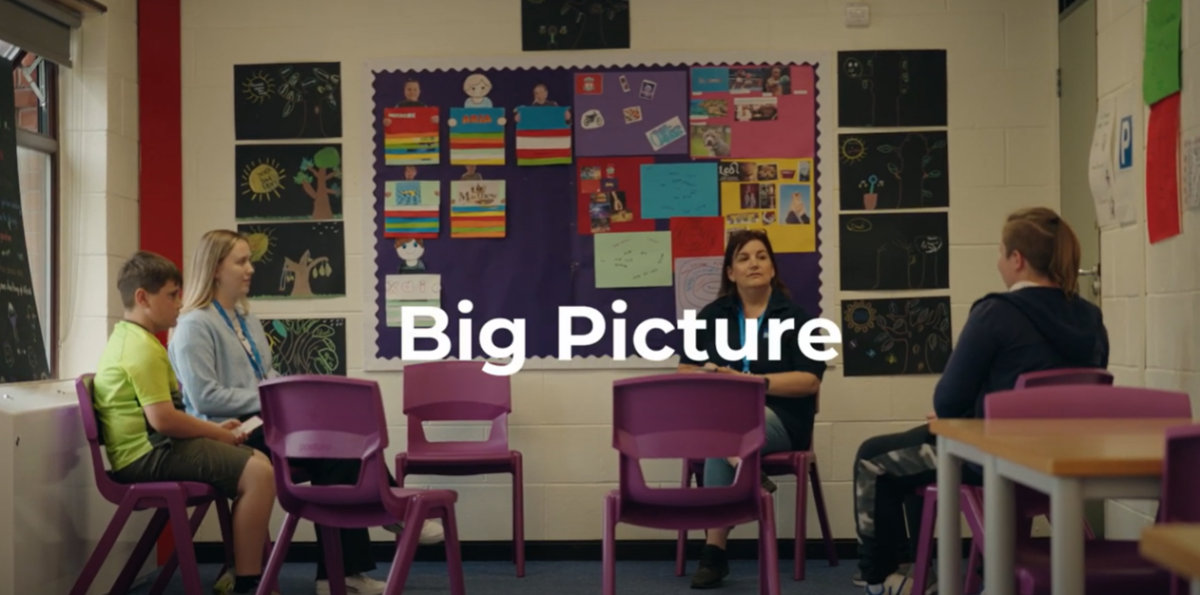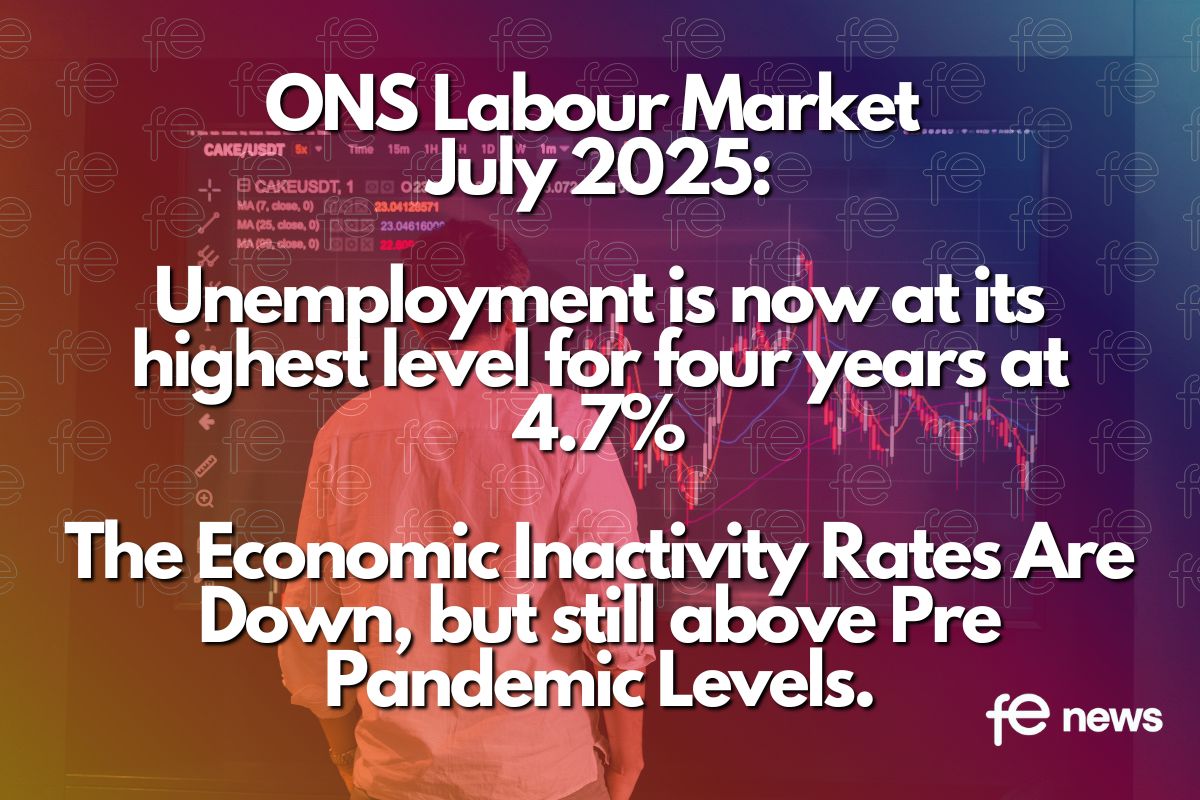New EPI report reveals biggest increase in the disadvantage gap between poor children in England and their peers

New EPI report reveals biggest increase in the disadvantage gap between poor children in England and their peers on record in 2021, in spite of use of teacher assessed grades during the COVID-19 pandemic. Much of the progress in closing the gap over the last decade was wiped out in 2021.
New research from the Education Policy Institute, analysing official results data, shows that in 2021 the key stage 4 disadvantage gap between poor children and the rest increased by the largest annual amount since comparable statistics have been available over the last decade. The report, which was funded by the Nuffield Foundation, shows that much of the reduction in the disadvantage gap over the last decade has been reversed during the pandemic.
The increase in the disadvantage gap in 2021 occurred despite the use of teacher assessed grades, and is in contrast to the situation in 2020, where EPI found no increase in the key stage 4 disadvantage gap, when centre assessed grades were used. This might suggest either that results for poor children particularly suffered in 2021, because the full impact of school closures was being felt, or that different grading approaches identified more lost learning in 2021.
Other key conclusions include:
- The GCSE gap for persistently poor children – those who are in poverty for at least 80 per cent of their time in school – also widened. There has been no overall progress in closing this gap over the last decade, and the gap for these children is twice the size of the gap for those children who are in poverty for a much shorter period of their time in school. This gap is now the same size as when we started to track the measure in 2011.
- In recent years, a higher proportion of poor children are living in persistent poverty – which has a particularly profound and negative impact on outcomes. The percentage of poor GCSE students who have always been eligible for free school meals has risen from 22.1% of disadvantaged pupils in 2019 to 27.6% in 2021 – a rise of over 9,000 pupils in year 11 alone.
- Gaps remained very wide for SEND pupils and those from certain ethnic groups.
- In the post 16 phase, students taking A levels fared better than those taking applied or vocational qualifications. Students completing applied general qualifications fell 0.9 grades behind students taking A levels, across their best three qualifications in 2021, even taking into account the different prior attainment of these young people. This may have put some students taking these subjects at a relative disadvantage when competing for higher education places.
- The 16-19 disadvantage gap widened in both 2020 and 2021, having been relatively stable in the previous two years. The widening of the gap in 2021 was significant and arose not merely because disadvantaged students are more likely to take the technical/vocational qualifications that were less subject to grade increases in 2020 and 2021 than A levels.
- Taken together with other EPI research showing continuing learning losses, not least for disadvantaged children, those in certain localities (typically the North and Midlands), and those in disadvantaged communities, this research makes the case for additional, targeted, financial support to recover lost learning and get policy on closing the gap back on track.
- Given the profound impact of persistent poverty on exam outcomes and learning (with persistently disadvantaged children around two years behind non poor children, versus 18 months behind for all disadvantaged children), this research also suggests that government should seek to halt and reverse the recent troubling trends towards more children being brought up in persistent poverty.
EPI has made four key recommendations as a consequence of this research, which are as follows:
Recommendation 1: Increased funding for disadvantaged students across both phases
- At GCSE, we recommend higher levels of funding for disadvantage which is weighted more heavily towards persistently disadvantaged pupils. Despite their additional challenges, persistently disadvantaged pupils receive no extra focus or support beyond the pupil premium.
- To close the 16-19 disadvantage gap, we recommend the introduction of a student premium based on previous free school meal status, akin to the pupil premium for school age pupils.
Recommendation 2: Improve identification of disadvantaged students for schools, colleges and researchers
- To better understand outcomes for persistently disadvantaged students and target support to where it is most needed, the DfE should ensure these learners can be easily identified by schools, colleges and researchers using the National Pupil Database. Given that Universal Credit protections will continue to affect who is considered disadvantaged based on FSM eligibility, there is a growing need to make available centrally held data that links family income to pupil-level attainment in the National Pupil Database.
Recommendation 3: Further research to understand drivers of gaps for vulnerable groups
- There is a pressing need for a fuller understanding of the drivers of poor outcomes for disadvantaged and SEND students, who have fallen even further behind during the pandemic. Further research should consider the role of student absence – and wider links with students’ wellbeing – as a driver of gaps.
Recommendation 4: Create a cross-government child poverty strategy
- If the government is serious about addressing educational inequalities,its efforts must include tackling the social determinants of educational outcomes, such as poverty. The government should urgently put in place a credible cross-government child poverty strategy.
The full report can be read here.
Sector Response
Rt Hon David Laws, Executive Chairman of the Education Policy Institute, said:
“This research reveals a very troubling picture – the learning losses during the pandemic appear to have reversed much of the progress in closing the disadvantage gap between poor children and the rest of the last decade. This has occurred in 2021 in spite of the use of teacher assessed grades, which were in part seen as a way of trying to mitigate pandemic impacts on education.
In 2020, and in the absence of the usual formal exams, the disadvantage gap was relatively stable. But in 2021, the gap increased by the largest amount we have seen since we have been able to monitor this key statistic. This highlights that there is much more the government needs to do to support schools in reducing learning losses – particularly schools in poorer areas and those with large numbers of disadvantaged students”.
Emily Hunt, Associate Director at the Education Policy Institute, said:
“Our research shows that the proportion of poor children who are living in poverty for most of their time in school is increasing markedly. These persistently poor children have outcomes which are dramatically worse than other poor children – on average they are likely to be two whole years behind non-disadvantaged children by age 16.
It’s also concerning that the disadvantage gap has now grown in the 16-19 phase of education for the previous two years, having remained relatively stable in the two preceding years. Unless wider social and economic policy can help halt this increase in persistent and deep poverty, it will be very tough for schools to deliver by themselves the greater social mobility and “levelling up” that the government says it wants to deliver.”
Dr Emily Tanner, Education Programme Head at the Nuffield Foundation, said:
“This analysis by EPI shines a light on the stark inequalities by disadvantage, SEND, post-16 pathway and region. It is important that we continue to explore fully how the pandemic affected the learning and attainment of different cohorts so that young people can be better supported to thrive and progress at every stage of their education.”
Russell Hobby, Chief Executive of Teach First, said:
“Even before the pandemic, the attainment gap between disadvantaged pupils and their peers was a huge concern – but to see so much of the progress in closing the gap wiped out is devastating.
“To tackle this, the government must weight funding towards schools and agencies serving disadvantaged communities, where it will make the biggest difference. Additional support must also be given to those who have lived in poverty for the longest time, as their education has been most damaged.
“If we get this right, not only are we giving all children the best possible chance to succeed, but in turn it will help to secure the future economic prosperity this country badly needs.”
Julie McCulloch, Director of Policy at the Association of School and College Leaders, said:
“This comprehensive report illustrates the deep-rooted inequalities within the English education system and our society as a whole.
“The impact of the pandemic has been particularly keenly felt by children and young people from disadvantaged backgrounds, who were less likely to have access to the devices and quiet spaces that aid remote learning. Schools do everything they possibly can to help these pupils, and staff often go above and beyond to support the most vulnerable. But the issue of social and economic inequality is not new, and nor can it be solved by schools and colleges alone. Significant investment is required to close the disadvantage gap and create a system without such a close alignment between family income and educational attainment.
“We echo the calls for increased funding for disadvantaged students. The pupil premium should be reformed to include 16–19-year-olds and be weighted in favour of those in persistent poverty. Another important step to take is develop a fairer accountability system that does not actively discourage teachers and leaders from working in schools serving disadvantaged communities.
“The government must urgently address the underfunding of post-16 education, which has resulted in a reduction in student support services at a time when they’re most needed, and placed schools and colleges in an incredibly difficult position. But above all, far more must be done to tackle the fundamental causes of child poverty and ensure all pupils are able to arrive at school in a fit state to learn.”
Professor Becky Francis, Chief Executive of the Education Endowment Foundation, said:
“Today’s findings from the Education Policy Institute are a stark reminder of the inequality entrenched in our schools, and the scale of the challenge that closing the attainment gap presents.
“Educators are doing everything in their power to recover and boost socio-economically disadvantaged pupils’ learning, but they cannot do it alone.
“We have a collective responsibility to ensure that a child’s background doesn’t limit their life chances. Crucial supports such as the pupil premium must be protected, ideally increasing in real terms, in order to ensure our teachers have the resource they need to help level the playing field for all of their pupils.”
David Hughes, AoC Chief Executive said:
“Colleges are rightly proud of the work they do to open up opportunities for students who need more support to achieve and progress but this work needs to be properly funded. This important report from EPI shines a light on the link between disadvantage and student performance, showing how the existing disadvantage grade gap grew in both 2020 and 2021.
“While everyone has been affected by the global pandemic, these impacts have not been experienced equally and we know that student poverty and disadvantage are now at crisis levels. From the outset of Covid, AoC consistently highlighted the many ways that disadvantage and funding reductions have combined to widen existing achievement gaps.
“We support the report’s recommendations for a 16 to 19 student disadvantage premium to mirror the pre-16 pupil premium. We have been making this case for some time. It is vitally important to target more resources towards the most disadvantaged 16 to 19-year-olds and we welcomed the post-16 tuition fund and the additional funded hours made available this year as a positive start.
“These recommendations are important but sit alongside the basic need for overall 16 to 19 funding to be increased at least back to 2010 levels. Funding per student in colleges will still be lower in 2024 than in 2010 despite increases due over the next two years.
“We agree there is an urgent need for an effective cross-governmental anti-poverty strategy. Education on its own cannot solve all the social consequences of disadvantage. Poverty blights people’s lives, narrows opportunities and does long-term damage which is felt across society. Only a concerted and joined-up approach can address the problem.”
Stephen Morgan MP, Labour’s Shadow Schools Minister, said:
“This is resounding evidence that this Conservative Government is abjectly failing our children.
“This scandalous widening of the attainment gap between the most disadvantaged and more affluent is a direct result of a decade of Conservative neglect of our schools and a result of the Conservatives crashing our economy.
“Labour believes excellence is for everyone, which is why we will deliver a National Excellence Programme to drive up standards in all our state schools, paid for by ending tax breaks for private schools.”
Michael Lemin, Head of Policy at NCFE, said:
“Today’s EPI report paints an extremely worrying picture when it comes to the hopes and aspirations of children from poorer backgrounds in England. This consistent and prolonged widening of the disadvantage gap, compounded by the immediate impact of the cost of living crisis, will only place more and more strain on children and families.
“The cost of living crisis is already impacting students who are less able to access key resources to support their learning. There needs to be further investment into ensuring this access is equal, especially for vocational students as it can cause issues for them to be able to fully engage in practical learning.
“There are also systemic barriers that need to be addressed. Many prospective learners or their families face losing their benefits if they engage in certain types of training. This lack of joined up policy-making leaves people falling between the cracks, wishing to upskill but facing a loss of income in order to do so, and increases the prospect of people becoming long-term benefit claimants.
“We absolutely agree with the recommendations outlined in the EPI report, particularly around providing more targeted support for regions, communities and groups who are most in need. The current circle of inequality must not be allowed to perpetuate.”











Responses